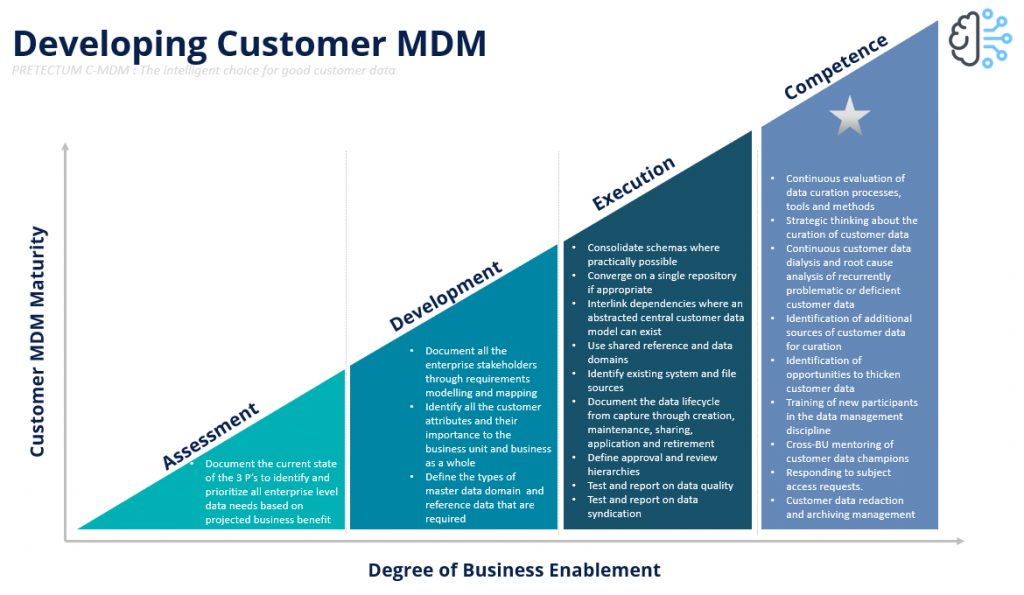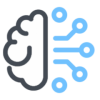An essential component in the business landscape is customer information, it is often the lifeblood for decision-making processes, yet many organizations struggle with fragmented, inconsistent, and siloed data.
Sales teams maintain their own spreadsheets, marketing relies on a CDP that doesn’t sync with CRM support systems, and customer service logs interactions are in yet another platform. This fragmentation leads to inefficiencies, missed opportunities, and a disjointed customer experience.
The solution to this woeful state lies in data centralization and often this means Master Data Management. MDM as a Service (MDaaS) is one way to address this. MDaaS is a modern approach to MDM that unifies customer data across departments, breaking down silos and enabling seamless collaboration.
Pretectum’s Customer Master Data Management (CMDM) platform exemplifies this shift. As a SaaS-based solution, it is hyper-enabled for connectivity, integrating effortlessly with a variety of source systems—whether CDP, ERP, CRM, e-commerce platforms, or custom databases.
Its cloud-native architecture allows businesses to extend integrations infinitely, supporting a federated hub-and-spoke model where different business units, even across multiple countries and jurisdictions, can maintain localized control while contributing to a single, authoritative customer master.

The Cost of Fragmented Customer Data
When customer data is scattered across systems, departments operate in isolation. Sales may have outdated contact information, marketing sends redundant promotions due to duplicate records, and customer support lacks visibility into past interactions. These inconsistencies lead to poor customer experiences, wasted resources, and lost revenue.
Consider a scenario where a customer updates their email address with the support team, but the change never propagates to the marketing database. Campaigns continue bouncing, and the sales team reaches out to an old contact, damaging trust. Worse, regulatory compliance becomes a challenge when customer preferences or consent statuses are mismanaged across systems.
How MDaaS Enables Cross-Functional Collaboration
Pretectum’s CMDM platform acts as the single source of truth, harmonizing customer data from disparate sources and ensuring all departments work from the same accurate, up-to-date records. By centralizing master data in the cloud, organizations enable:
- Sales to access real-time customer profiles, including purchase history and support interactions, improving lead conversion and upselling.
- Marketing to segment audiences more precisely, eliminating duplicates and ensuring compliance with consent preferences.
- Support to resolve issues faster with a 360-degree view of the customer, reducing frustration and churn.
Because the platform supports self-service data submission, business units can contribute updates directly while governance policies maintain data quality. For example, a regional sales team in Europe can input localized customer attributes, which are then validated and merged into the global master without manual intervention.
The ROI of Eliminating Duplicates and Inconsistencies
The financial impact of poor-quality customer data is staggering. Studies suggest that 20-30% of operational costs are wasted on managing bad data, from returned mail to misdirected sales efforts. By reducing duplicates and ensuring consistency, Pretectum’s CMDM delivers measurable ROI:
- Lower operational costs – Fewer manual reconciliations, reduced storage waste, and streamlined compliance reporting.
- Higher conversion rates – Clean data means better targeting, fewer failed communications, and improved customer engagement.
- Reduced compliance risks – With centralized consent management, businesses avoid fines from GDPR, CCPA, or other privacy regulations.

Organizational Maturity and Self-Service Data Management
Not all companies are at the same stage of data maturity. Some still rely on IT to manually merge spreadsheets, while others have adopted MDM but struggle with scalability. Pretectum’s platform is designed to grow with an organization, supporting:
- Early-stage maturity – Businesses can start with basic deduplication and gradually implement advanced workflows.
- Mid-level maturity – Self-service data stewardship allows departments to manage their own records within governance guardrails.
- Advanced maturity – Federated MDM models let global enterprises maintain local variations while contributing to a unified master.
A key differentiator is Pretectum’s zero-party and first-party data management capabilities. In an era where third-party cookies are disappearing, businesses must rely on direct customer-provided data. The platform’s consent management features ensure that preferences are tracked and respected across all touchpoints, building trust and improving data accuracy.

Why Pretectum’s Modern Architecture Matters
Many legacy MDM solutions require heavy infrastructure, complex deployments, and costly maintenance. Pretectum’s multi-tenant, serverless scaling model eliminates these barriers, offering:
- Rapid deployment – No hardware or lengthy setup; businesses can onboard in days, not months.
- Elastic scalability – Whether a startup or a multinational, the platform grows with demand.
- Cost efficiency – Pay-as-you-go SaaS pricing means no upfront capital expenditure.
This makes enterprise-grade MDM accessible to organizations of all sizes, leveling the playing field in competitive markets.
Unify Today
The longer customer data remains siloed, the more revenue leaks through inefficiencies and missed opportunities. Pretectum’s CMDM platform provides a future-proof, scalable, and collaborative approach to master data management, empowering businesses to deliver seamless customer experiences while reducing costs and compliance risks.
If your organization struggles with duplicate records, departmental silos, or regulatory challenges, the time to act is now. Break down the barriers, unify your data, and transform how your teams collaborate—because in the age of the customer, data unity isn’t just an advantage; it’s a necessity.
Explore Pretectum’s CMDM today and take the first step toward a truly connected customer master.


